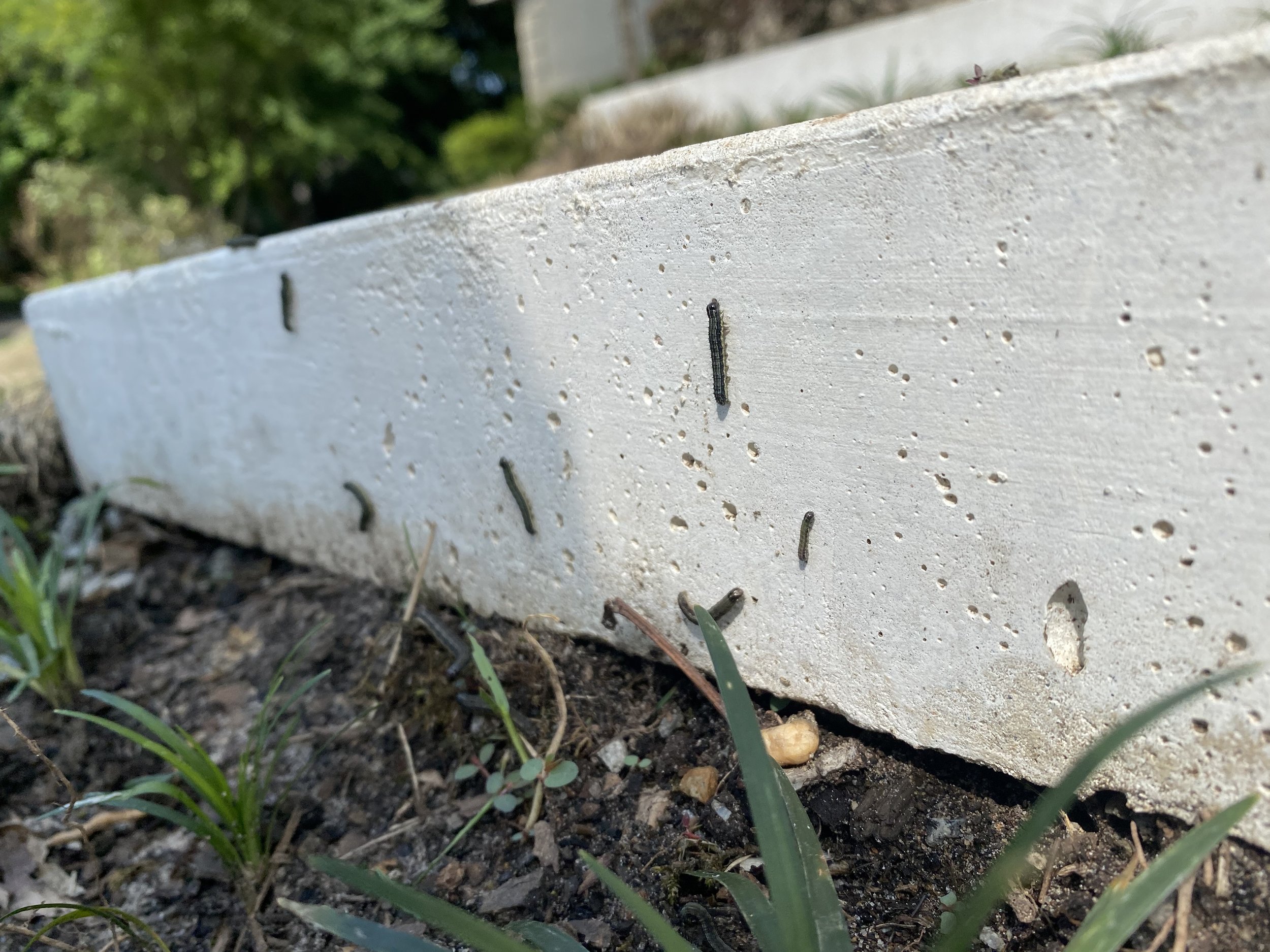Armyworms



Basic Description
Armyworms are commonly observed moving in large groups across lawns, feeding openly during daylight hours, which aids in their detection. They are typically large caterpillars with longitudinal stripes on their bodies and a netlike pattern on their heads. The fall armyworm, a persistent pest for over a century, targets various plants, including turfgrasses, with a preference for well-fertilized bermudagrasses. They may also infest freshly sodded zoysia grass.
Biology
Fall armyworm caterpillars cause damage by chewing on grass, being most active during the early morning or late afternoon/early evening, although they can feed at any time. They are easily visible on tall, unmowed turf during the day, but on regularly mowed turf, they hide in the turf during warmer hours. Typically appearing in late summer or early fall, fall armyworm outbreaks are often reported in late July or early August, with severe cases sometimes occurring as early as mid-April. The adult fall armyworm is an ash-gray moth with a wingspan of approximately 1½ inches, characterized by smaller, mottled gray and brown front wings.
Damage
Fall armyworm damage to turf varies in appearance and severity depending on grass type and maintenance practices. While these larvae feed on various plants, they favor grasses like corn and bermudagrass. They can attack both cool and warm-season turfgrasses, with bermudagrass being their primary target.
When and What to Look For:
Damaged grass / chewed plant tissue
Most active in early morning or late afternoon/early evening
Late Summer or Early Fall (late July or early August)
Cultural Management
The presence of birds and paper or red wasps can signal armyworm infestation in turfgrass. Look for consistent bird activity or pecked holes in the turf. Paper wasps actively seek out larvae, which they kill and feed to their own larvae. If wasps or birds are present, inspect the turf for larvae or use a soap flush method. Soap flushes can bring larvae to the surface for detection. Check for fall armyworm eggs on light-colored surfaces, such as leaves, gutters, and fence posts. Natural enemies like birds, fire ants, and wasps can help control armyworm populations. Treatment decisions depend on turf type, condition, and usage. Mowing before treatment reduces the turf depth, requiring insecticide penetration. Apply insecticides early or late in the day when larvae are most active. Follow label instructions for application and post-treatment irrigation procedures.
Chemical Control
Professional products vary significantly in mode of action, systemic properties, and the length of residual. Acelepryn (Chlorantraniliprole), the active ingredient in our "Season Long Turf Pest Prevention" treatment, has systemic properties and will provide season-long residual control. Typical insecticides, synthetic pyrethroids (e.g., bifenthrin), only maintain residual control for two weeks at the most.
Chemical controls for fall armyworms in lawns are often not specifically labeled for fall armyworms but are labeled for caterpillar pests of turfgrass. Most products available to homeowners are granular formulations of synthetic pyrethroids (e.g., bifenthrin). Granular formulations and ready-to-use (RTU) spray formulations do not require mixing, dilution, or spray equipment. Concentrated formulations require a tank sprayer and proper dilution of the product according to the label. For more information, contact your county Extension agent.
